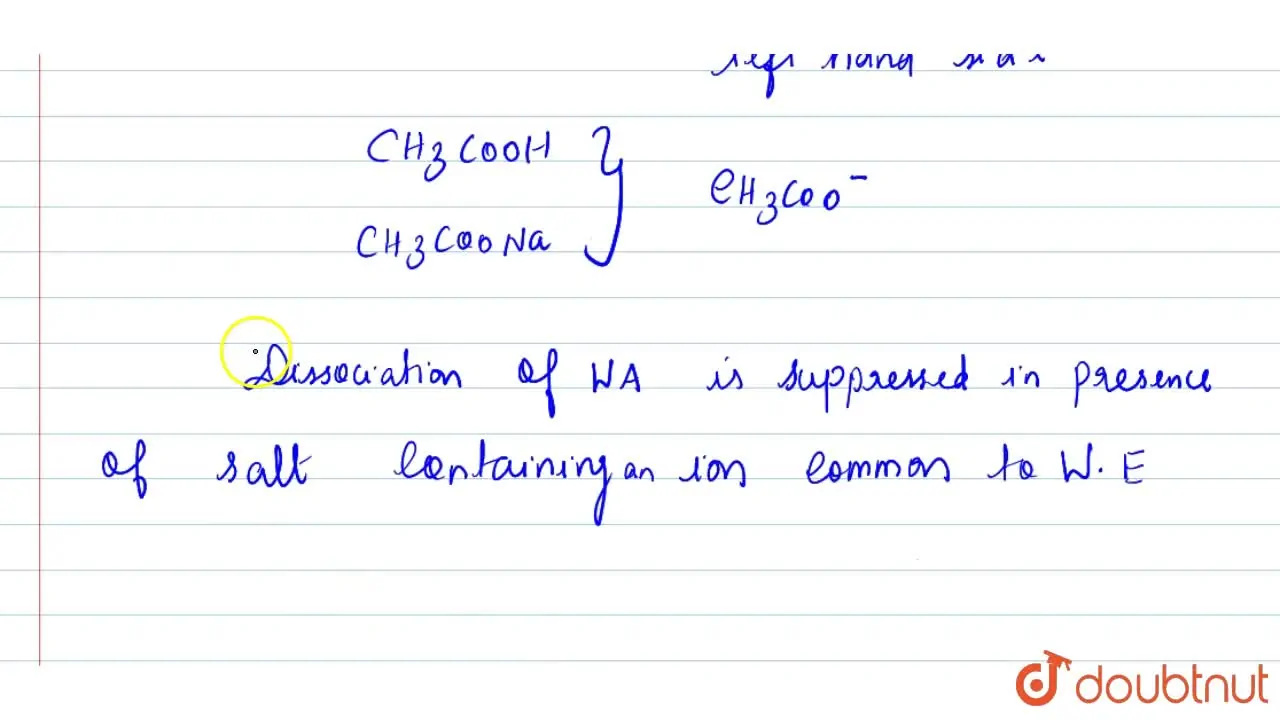Explain common ion effect with an example.Solution in Tamil
Common Ion Effect: When a salt of a weak acid is added to the acid itself, the dissociation of the weak acid is suppressed further.
Acetic acid is a weak acid. It is not completely dissociated in aqueous solution and hence the following equilibrium exists.
However, the added salt, sodium acetate, completely dissociates to produce ion.
Hence, the overall concentration of is increased, and the acid dissociation equilibrium is disturbed. We know from Le chatelier.s principle that when a stress is applied to a system at equilibrium, the system adjusts itself to nullify the effect produced by that stress. So, in order to maintain the equilibrium, the excess ions combines with ions to produce much more unionized i.e., the equilibrium will shift towards the left. In other words, the dissociation of is suppressed. Thus, the dissociation of a weak acid is suppressed in the presence of a salt containing an ion common to the weak electrolyte. It is called the common ion effect.
Related Playlists
- BOOK - FULL MARKSCHAPTER - SAMPLE PAPER 10 (SOLVED)EXERCISE - Part-IV10videos
SAMPLE PAPER 10 (SOLVED)
- BOOK - FULL MARKSCHAPTER - SAMPLE PAPER 10 (SOLVED)EXERCISE - Part-II9videos
SAMPLE PAPER 10 (SOLVED)
- BOOK - FULL MARKSCHAPTER - SAMPLE PAPER - 9 (SOLVED)EXERCISE - PART-IV10videos
SAMPLE PAPER - 9 (SOLVED)
- BOOK - FULL MARKSCHAPTER - SAMPLE PAPER 2 (SOLVED)EXERCISE - PART IV5videos
SAMPLE PAPER 2 (SOLVED)
Similar Questions
(a) (i) What is Cementation?
(ii) Write a notes on ionisation enthalpy in p-block elements?02:07View SolutionPredict the conditions under which
(a) Aluminium might be expected to reduce magnesia.
(b) Magnesium could reduce alumina.05:39View Solution(i) CO is more stable at higher temperature. Why ?
(ii) How will you prepare potash alum ?05:39View Solution(a) (i) Describle a method for refining nickel.
(ii) Why group 18 elements are called inert gases ? Write the general electronic configuration of group 18 elements.
(b) (i) Give the uses of helium.
(ii) Ni(II) compounds are more stable than Pt(II) compound.Give reason.02:02View SolutionWhich is not an example of common ion effect ?
04:32View SolutionExplain common ion effect with an example.
View SolutionExplain common ion effect with an example.
02:57View SolutionWhat is common ion effect? Give an example.
04:42View SolutionWhat is common ion effect? Cite an example.
View SolutionExplain common ion effect with an example.
View SolutionWhat is common ion effect. Give examples.
07:19View SolutionBriefly explain the terms ‘Common ion effect’ .
06:05View SolutionDerive defination and explain common ion effect by example .
04:41View SolutionExplain the uses of common ion effect.
08:04View SolutionSuggest an example for common ion effect.
03:10View Solution


